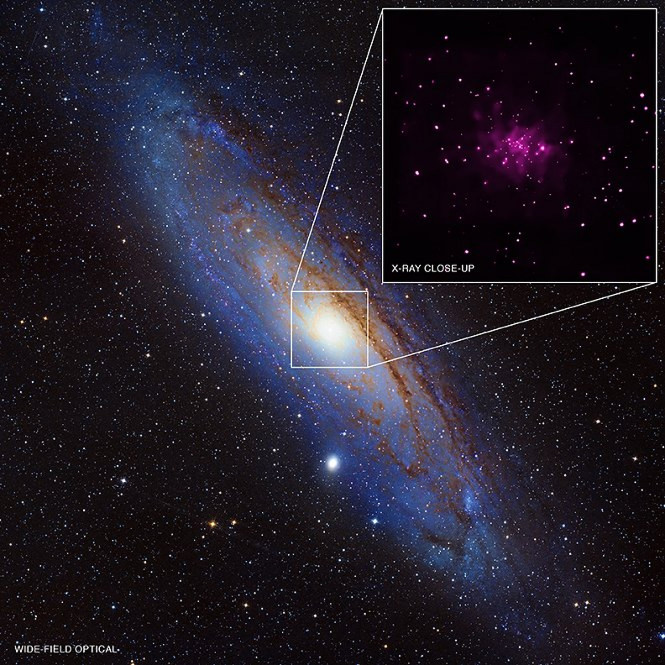Black Hole Bonanza: 26 New Black Holes Found In Milky Way’s Sister Galaxy, Andromeda
NASA researchers have discovered a whole new group of black holes in our Milky Way neighborhood, the space agency announced on Wednesday.
After examining data going back more than 13 years obtained from NASA's Chandra X-ray Observatory, astronomers at NASA identified 26 new black holes -- an unprecedented number -- in the Andromeda Galaxy, one of the galaxies closest to the Milky Way.

Andromeda is considered by many astronomers as a sister galaxy to the Milky Way, with which it will collide after several billion years. Scientists believe that the discovery of the “black hole bonanza” may provide clues for similar discoveries in the future.
"While we are excited to find so many black holes in Andromeda, we think it's just the tip of the iceberg," Robin Barnard of Harvard-Smithsonian Center for Astrophysics, in Cambridge, Mass., said. "Most black holes won't have close companions and will be invisible to us."
The new black hole candidates were formed via powerful collisions of massive stars and are five to 10 times bigger than the sun. Although most black holes are invisible to us, scientists can spot them as they pull up material from a companion star, which gets heated up to produce radiation before it disappears into the black hole.
Researchers said that to identify these black holes, they had to ascertain that the holes belong to the stellar mass category in the Andromeda Galaxy itself, as opposed to being super-massive black holes in more-distant galaxies.
Researchers used a new technique to do this by exploiting information about the brightness and variability of the X-ray sources in the Chandra data. According to scientists, stellar mass systems change much more quickly than super-massive black holes.
Astronomers could classify the new Andromeda systems as black holes because they were brighter than a certain high level of X-rays and also had a particular X-ray color. Sources containing neutron stars, the dense cores of dead stars that would be the alternate explanation for these observations, do not show characteristics simultaneously.
Previously, researchers found nine black hole candidates within the region covered by the Chandra data. Therefore, the present discovery increases the total to 35. Seven of these black hole candidates are within 1,000 light-years of the Andromeda Galaxy's center. That is more than the number of black hole candidates with similar properties located near the center of the Milky Way galaxy.
"We are particularly excited to see so many black hole candidates this close to the center, because we expected to see them and have been searching for years," Barnard said.
© Copyright IBTimes 2024. All rights reserved.






















